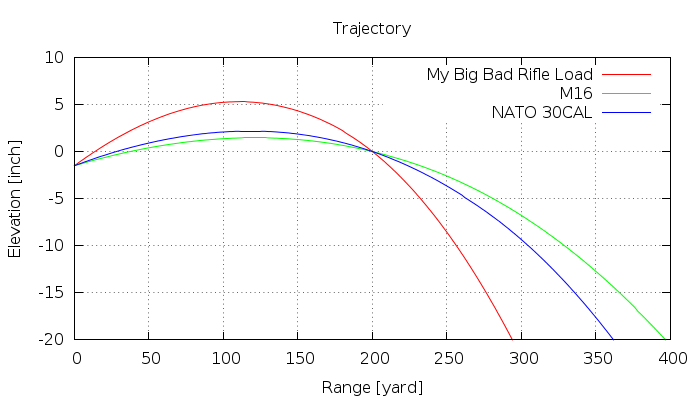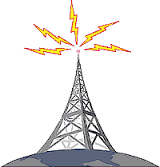I grew up with a boy’s natural curiosity about Firearms. Considering to purchase Firearms, I searched for a way to compare and contrast ballistic characteristics from the wide variety of calibers available. Once I began to shoot, I wanted to sight a gun for accuracy. At last I found a complete computer rifle ballistics calculator program (technically, G1 projectiles). Not only was this program adaptable to a personal computer but it was developed by a career U.S. military ballistics researcher. Furthermore the calculation method relies on empirical results rather than heavy theoretical considerations often associated with fluid dynamics. After programming these routines I referenced manufacturer’s ammunition ballistic data and found a high degree of correlation with bullet velocity at range. This gave me confidence to develop a general ballistic application. I created the following webpage to graphically show ballistic results.
To use the webpage, the user begins by entering a name for their rifle load, then enters several initial ballistic quantities related to their ammunition (muzzle velocity, bullet weight, bullet ballistic coefficient), their firearm (scope/sight height) and environmental conditions (temperature, altitude). The user can also compare their load to one or more common firearm calibers.
One of the more difficult required entry quantities is the bullet ballistic coefficient. This coefficient is a measure of the bullet’s ability to resist the de-accelerating forces of air resistance. Physically, ballistic coefficient is related to bullet diameter, shape (cross section) and mass (weight). The larger the coefficient value, the longer/farther the bullet retains its velocity and energy. Ammunition manufacturers often publish this value and these values can be found online. Typically any caliber ammunition can be loaded with a variety of bullet types and coefficients, so careful selection is required. If a bullet coefficient cannot be found, the coefficient can be calculated using the link below. Enter 2 velocity, range data pairs from the manufacturer’s data. The most most accurate results can be obtained by measuring bullet velocity at 2 ranges using a chronometer.
Bullet Ballistic Coefficient Calculator
Ballistics Output
After clicking the “Fire” button, several graphs display the ballistic results (Trajectory, Kinetic Energy, Velocity and Time of Flight). As always, the trajectory of the bullet is exactly on target at the range specified by user input. An example plot is shown below.

Also on this page is a link to a custom target created from the user’s input data. An example target is shown below.

This target is in PDF format and can be printed on normal 8.5×11″ paper. To sight a rifle, mount the target at 100 yds. distance and aim for the center circle. The horizontal arrows indicate the impact point at various ranges. Adjust your sights in order to impact the line at the desired range. In other words if you want the bullet to be on-target at 200 yds. aim for the center and adjust your sights until the bullet impacts to 200 yd. horizontal line (slightly above the 100 yd. line). The horizontal range of the arrows shows the +/-3″ accuracy at each corresponding range.
Use the Renegade Rifle Ballistics webpage to advance your shooting ability.
